It seems like just a few years ago nobody was talking about Radon and now its all over the news and now can be included in home inspections. But the questions is…what  is it? Is it necessary to inspect for Radon Gas when buying a home?
is it? Is it necessary to inspect for Radon Gas when buying a home?
As you will see on a Google search for Radon it’s a colorless, orderless gas that is found right in the ground from the breakdown of uranium in rock, soil & water. It’s natural and contrary to many beliefs, the presence of Radon is not because of faulty building or poor construction.
Radon gas can contaminate drinking water and come through cracks in walls and floors without you knowing it. So, why does this matter and what’s the health risks of Radon?
A quote direct from the web site epa.gov here is what they say about living with Radon… “Radon gas decays into radioactive particles that can get trapped in your lungs when you breathe. As they break down further, these particles release small bursts of energy. This can damage lung tissue and lead to lung cancer over the course of your lifetime. Not everyone exposed to elevated levels of radon will develop lung cancer. And the amount of time between exposure and the onset of the disease may be many years”.
What area of MN do you live in? To find out radon levels in your specific area, use the map below.
Most Radon inspectors I have used when selling & listing homes have stated that levels above 4.0 are serious enough to mitigate. In other words, something should be done as it’s a health risk. If you’re buying a home you should have your agent make a radon test part of your home inspection. The cost is relatively low – a Radon mitigation/repair usually runs anywhere from $750.00 to $1,200 on average but of course each situation varies.
Below is a chart from epa.gov on risks for smokers vs non-smokers:
Radon Risks If You Smoke
| Radon Level | If 1,000 people who smoked were exposed to this level over a lifetime*… | The risk of cancer from radon exposure compares to**… | WHAT TO DO: Stop smoking and… |
|---|---|---|---|
| 20 pCi/L | About 260 people could get lung cancer | 250 times the risk of drowning | Fix your home |
| 10 pCi/L | About 150 people could get lung cancer | 200 times the risk of dying in a home fire | Fix your home |
| 8 pCi/L | About 120 people could get lung cancer | 30 times the risk of dying in a fall | Fix your home |
| 4 pCi/L | About 62 people could get lung cancer | 5 times the risk of dying in a car crash | Fix your home |
| 2 pCi/L | About 32 people could get lung cancer | 6 times the risk of dying from poison | Consider fixing between 2 and 4 pCi/L |
| 1.3 pCi/L | About 20 people could get lung cancer | (Average indoor radon level) | (Reducing radon levels below 2 pCi/L is difficult.) |
| 0.4 pCi/L | About 3 people could get lung cancer | (Average outdoor radon level) | |
| Note: If you are a former smoker, your risk may be lower. * Lifetime risk of lung cancer deaths from EPA Assessment of Risks from Radon in Homes (EPA 402-R-03-003). ** Comparison data calculated using the Centers for Disease Control and Prevention’s 1999-2001 National Center for Injury Prevention and Control Reports. |
|||
Radon Risk If You’ve Never Smoked
| Radon Level | If 1,000 people who never smoked were exposed to this level over a lifetime*… | The risk of cancer from radon exposure compares to**… | WHAT TO DO: |
|---|---|---|---|
| 20 pCi/L | About 36 people could get lung cancer | 35 times the risk of drowning | Fix your home |
| 10 pCi/L | About 18 people could get lung cancer | 20 times the risk of dying in a home fire | Fix your home |
| 8 pCi/L | About 15 people could get lung cancer | 4 times the risk of dying in a fall | Fix your home |
| 4 pCi/L | About 7 people could get lung cancer | The risk of dying in a car crash | Fix your home |
| 2 pCi/L | About 4 person could get lung cancer | The risk of dying from poison | Consider fixing between 2 and 4 pCi/L |
| 1.3 pCi/L | About 2 people could get lung cancer | (Average indoor radon level) | (Reducing radon levels below 2 pCi/L is difficult.) |
| 0.4 pCi/L | (Average outdoor radon level) | ||
| Note: If you are a former smoker, your risk may be higher. * Lifetime risk of lung cancer deaths from EPA Assessment of Risks from Radon in Homes (EPA 402-R-03-003). ** Comparison data calculated using the Centers for Disease Control and Prevention’s 1999-2001 National Center for Injury Prevention and Control Reports. |
|||
The Derrick Monroe Group of Realtors can help you through the process of selecting a Radon professional and getting your next home tested before you move in to ensure your family is safe in your new home.

